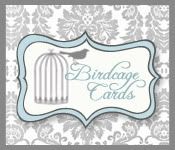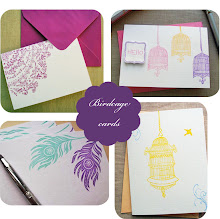1.Screen Printing: From the Stencil category of printmaking. Also know as silk-screening this type of printing is praised for its relative ease of production with very high quality results. The basic process involves stretching mesh across a rectangular frame and using a light sensitive photo emulsion to create a “stencil”. The ink is then pushed through the unblocked areas of mesh to create an image.
 2.Block Printing: This form of relief printing dates back to 5th century China in the form of hand carved wooden blocks which were used to print text and images on to paper and fabric. Today many block prints are the result of hand carved linoleum commonly referred to an linocuts. The image is transferred on to paper by rolling an inked brayer over the raised areas of the carving and then applying some pressure and elbow grease through the use of a press, a baren, or a spoon.
2.Block Printing: This form of relief printing dates back to 5th century China in the form of hand carved wooden blocks which were used to print text and images on to paper and fabric. Today many block prints are the result of hand carved linoleum commonly referred to an linocuts. The image is transferred on to paper by rolling an inked brayer over the raised areas of the carving and then applying some pressure and elbow grease through the use of a press, a baren, or a spoon.
3.Engraving: From the intaglio family of printmaking. Metal plates are carved using a steel burin. Ink is then applied to the entire metal plate only to be wiped off, leaving only the grooves or carved areas full of ink. Once put in a press the paper picks up the ink from the carved lines making a print. The earliest engravings date back the the 15th century and, today, our paper money is printed from metal engraving plates.
4.Lithography:From the planographic family. An image is drawn on to stone (typically limestone) with a greasy crayon. Acid is used to burn the image into the surface. Ink is then applied to the whole surface, but sticks only to the greasy marks of the drawing. A sheet of paper is placed on top of the stone and the image is transferred on to the paper through the use of a printing press. This is truly an exceptional method of printmaking that, though rarely used today, was extremely popular during the late 1800's until the 1920's. All those bright and colorful circus posters, WWI propaganda posters, and product advertisements were lithographs. 5.Digital Printing: Images are printed using a digital printer rather than a traditional press or by hand. It has a near immediate turn-around as the creation of printing plates is not needed. The tricky thing about digital printing is getting an accurate color reproduction. The difference between high quality prints and low quality prints is in the type of ink used. Today's Giclée prints are basically fine art prints produced on an ink-jet printer.
5.Digital Printing: Images are printed using a digital printer rather than a traditional press or by hand. It has a near immediate turn-around as the creation of printing plates is not needed. The tricky thing about digital printing is getting an accurate color reproduction. The difference between high quality prints and low quality prints is in the type of ink used. Today's Giclée prints are basically fine art prints produced on an ink-jet printer.
These techniques represent just a fraction of the many different types of printmaking. While the chemicals and inks available to print makers today vary greatly from centuries, and even decades, ago you will often find that the basic methods of printing remain carefully preserved by today's printers. After all, printmaking is an important part of our cultural history. I hoped you've enjoyed learning a little bit more and if an interest has been sparked please nurture it and head over to your local library or community workshop to learn more!



















Nice concise round up - thanks! I was under the impression that lithography is still widely used, but with photosensitive plates instead of stones, and that most newspapers are printed this way?
ReplyDeleteThanks Jesse! So sorry about the delay in my response I didn't see your comment - yikes! To answer your question: yes...well, kind of depending on who you ask.
ReplyDeleteToday's newspaper printing is offset meaning that images are taken from a computer and transfered to photosensitive plates. The plates are wetted with both water and ink (which is reminiscent of early lithographic methods) then printed on to a thin sheet of rubber which then transfers the ink on to the paper by kissing it. Early lithography, as you may already know, printed straight from that hand carved limestone on to its medium (paper).
In the sense that newspapers and magazines are printed by relying on a stystem of repulsion (i.e. ink from water) then yes it is still technically defined as lithography. But, not only has so much of the process changed from its inception, but, so too has its predominante use.
It's these original recipes of printmaking that I tend to treasure most.